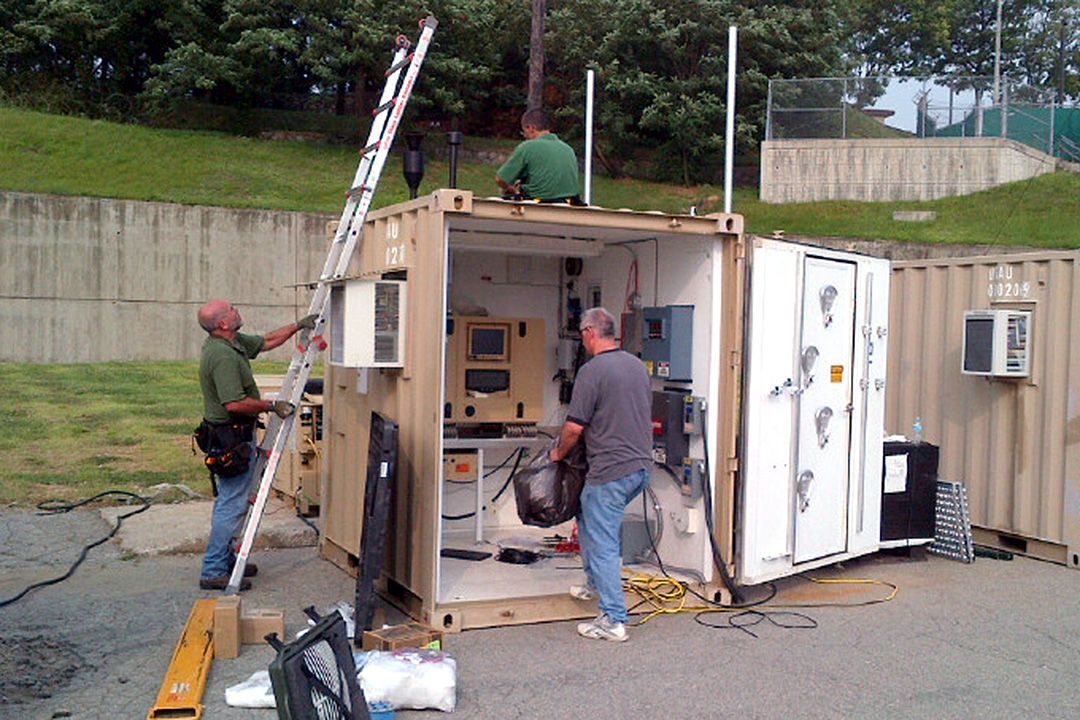Members of an Army chemical-biological research team set up biological sensors for an operational demonstration at a U.S. military installation in Osan, South Korea.
The Joint United States Forces Korea Portal and Integrated Threat Recognition, also known as JUPITR, a program led by the Joint Program Executive Office for Chemical and Biological Defense, or JPEO-CBD, and supported by the U.S. Army Edgewood Chemical Biological Center, or ECBC, will provide unique biological detection capabilities to address the demand for stronger biosurveillance capabilities on the Korean Peninsula.
ECBC scientists and engineers said they brought, “biosurveillance capabilities into the 21st century.”
“What they all had in common is that they were eager to take on something new, to develop new knowledge,” said Jennifer Thermos, the Assessment of Environmental Detection, or AED, leg lead for Project JUPITR.
“I handpicked them based on their excitement and enthusiasm for taking on a task as challenging as the Assessment of Environmental Detectors leg of Project JUPITR.”
After training at home and technology demonstrations at Dugway Proving Ground, Utah, and the Naval Maritime Test Facility in Key West, Florida, the time came for an operational demonstration on Osan Air Base in South Korea.
“At this point, we’re truly bonded as a team,” said Stephen Carrig, AED Technical Demonstration lead. “We got to the point where we could be brutally honest with each other without anyone taking offense. We were like a band of brothers.”
They also knew how to relax, he said. They had weekly barbecues and would shoot the breeze after work with an easy companionship.
The three plus months of training on how to operate the detection equipment the team members were given by the vendors had to be condensed to five days for the airmen and Soldiers participating in the operational demonstration.
“In addition to giving them a crash course in how to use the equipment, we had to marry up the technology with Project JUPITR’s overall force protection architecture,” said Andrew Murphy, AED Operational Demonstration lead. “We had six systems using six different computer languages between them, and we had to establish a common operating language between them that we could import to the early warning leg.”
The early warning leg then created the common operating picture that provided the exercise participants with total situational awareness, which was the main point of the exercise, Murphy said.
The main feature of the common operating picture is a map with each sensor located as a symbol on it. A positive detection is indicated on the screen by any one or more sensors in real time. The map also has symbols for security cameras, and direct feeds from the cameras can be accessed in real time.
The operational demonstration consisted of having the trained airmen and Soldiers respond to different threat scenarios by using the common operating picture as a command and control tool.
“The warfighters in the operational demonstration were very excited about the new technology,” Murphy said. “It was like they were firemen in a firehouse who, instead of just showing up at the fire, could see the fire start on a screen and monitor all the activity on the scene as the responders arrived and got it under control.”
“We got the satisfaction of putting the exact technology they needed into their hands and saw how much they could do with it,” said Kalli Stull, one of the AED team members. “They also gave us valuable feedback on how we could further refine the systems to make them even better, which made us excited about doing our job.”











